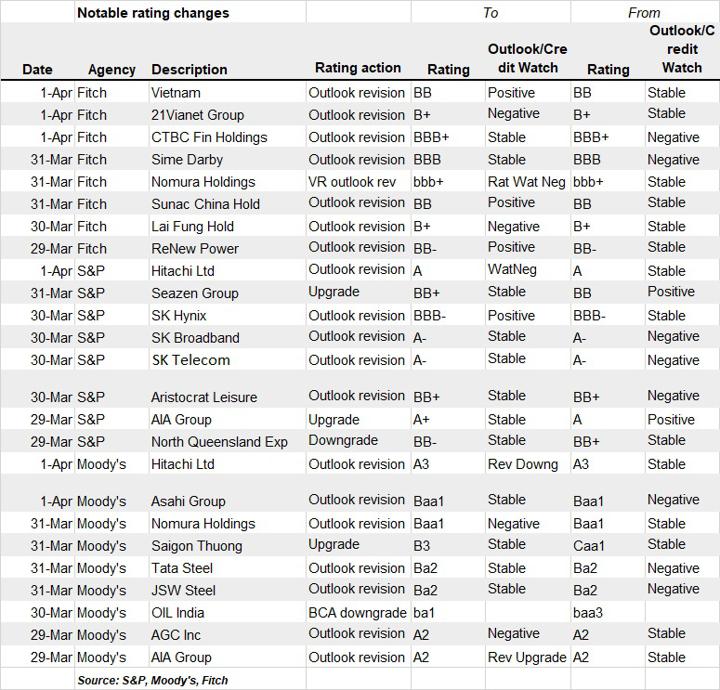Economic events
Financial markets will react this week to the consensus-busting US non-farms payroll data from Friday, which showed the world’s largest economy created the most jobs in seven months in March. That was boosted by confidence in Washington’s fiscal spending and accelerating vaccination programme.
The US jobs report showed employment rising 916,000 versus the 660,000 consensus with a 156,000 upward revision to the past two months. Private payrolls rose 780,000 and the unemployment rate dropped to 6%.
“March experienced another huge jobs figure and with people movement and activity picking up strongly through 2H March we have to pencil in a 1 million plus reading for April,” said James Knightley, ING Bank’s Chief International Economist.
“This would allow for a 4Q taper of the QE asset purchases and could conceivably open the door to a rate hike before then end of next year.”
Also on ATF
- K-Pop star makers to buy into Justin Bieber, Ariana Grande
- Amazon climbs down over pee-in-a-bottle denial
- Multi billion-dollar Suez jam cleared
There will also be caution amid worries about the relatively tight monetary environment and slowing new loans in the world’s second largest economy.
“We think strong growth momentum and rising inflation support our view that the PBoC will adopt a tightening bias this year,” said Barclays economists Yingke Zhou and Jian Chang.
“We think the upside surprise in the NBS manufacturing PMI and sizable improvement in services PMI support our above-consensus Q1 and 2021 GDP forecasts,” they said referring to their projection of 20.8% and 9.4% economic expansion while forecasting PPI inflation to rise to 3.5% in March, from 1.7%, on rising PMI input and output prices, and predicting CPI would return to inflation.
FOMC, ECB
Economic data watchers in the week ahead will focus on rate decisions in India and Australia while minutes of FOMC and ECB meetings will also be parsed.
Despite some encouraging signs from recent economic data and hints of higher price pressures building, Reserve Bank of India and Reserve Bank of Australia are seen holding rates.
“Both central banks are keen to ensure policy remains accommodative while COVID-19 uncertainties and restrictions persist, with India in particular concerned about the economic impact from further waves of infections,” said Chris Williamson Chief Business Economist, IHS Markit.
He added that the ECB policy meeting accounts will provide more colour on its recent decision to step up asset purchases amid concerns over rising bond yields, but it’s the FOMC minutes that will garner particular attention. Analysts are eager to assess just how concerned Fed policymakers are about rising bond yields and when US monetary policy may start being tapered.
Elsewhere in the region, trade figures from Taiwan will be tracked as exports are seen showing a sustained rise powered by the global semiconductor cycle that’s going full steam ahead amidst the ongoing chip shortage.
Fund flow
Investors piled $68 billion into US Money Market, Equity and Bond Funds in the final week of the first quarter of the year amid optimism driven by the mammoth stimulus plan and the rapid vaccination rate in the world’s largest economy.
“Both US equity markets and flows to EPFR-tracked US Hedge Funds appeared to shrug off the implosion of Archegos Capital, which triggered forced sales of some stocks when it defaulted on margin calls from creditor banks, and Financial Sector Funds also ended the week with a solid inflow,” said Cameron Brandt, EPFR’s Director, Research.
But worries about policy normalisation in China hurt the flow momentum for Emerging Asian markets heading into the second quarter. Still Emerging Markets Equity Funds ended March with their 26th inflow in the past 27 weeks but the flows were at less than a third of the levels seen in February and Emerging Markets Bond Funds ended the quarter by posting their fourth outflow in the past six weeks. But China Bond Funds continue to soak up fresh money while Chinese regulators look to improve the quality of domestic ratings agencies.
China Equity Funds posted their second biggest outflow year-to-date, although the run of retail inflows that started last year continued for at least another week, as manufacturing and other data gave credence to official signals that policy support introduced the minimize the impact of the COVID-19 pandemic will be dialed back.
Europe Equity Funds returned to inflow during a week that ended with French President Emmanuel Macron declaring a nationwide lockdown to contain the re-accelerating pandemic.
Precious Metals Funds saw further outflows in the face of higher growth expectations and the rising10-year US Treasury yields. Gold is down 10% year to date and has lost nearly 20% from its August peak. Silver Funds last recorded inflows in early February and Gold Funds in mid-January.
Economic data calendar

Last week’s rating changes
























